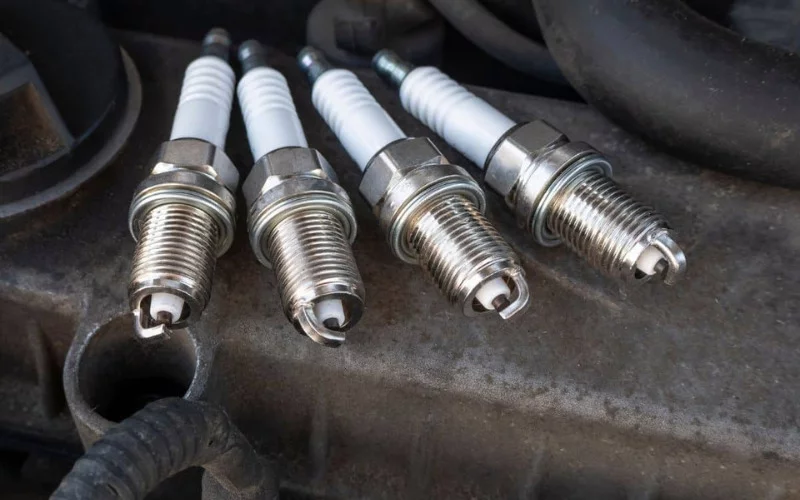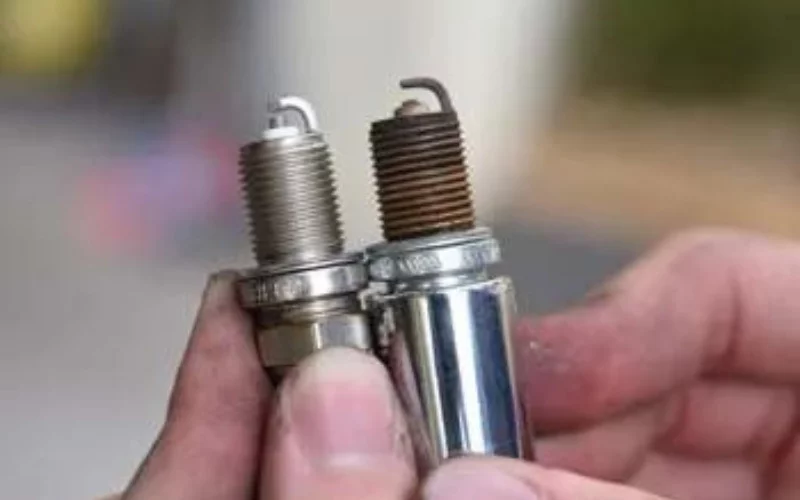One of the interesting things about life is that there are some small and seemingly insignificant-looking components that a big body depends on. The same goes for a spark plug, which is a small part of a machine, yet the machine cannot start without it.
Spark plugs supply the spark that ignites the mixture of air and fuel in an engine to produce power, which means that an engine cannot start without them. Spark plugs come in different sizes and are meant for different sizes or types of engines.
Today, we will let you know what size of spark plugs socket will suit your engine or machine, tell you when you have a problem with your spark plugs, and more.
What Is A Spark Plug Socket?
A spark plug is an electrical device used in internal combustion engines to deliver electric current from an ignition system, thereby creating a spark by igniting the mixture of compressed air and fuel in the combustion chamber.
Spark plug sockets have hexagonal from the upper view, while from the side view, it looks cylindrical; it looks more like a hollow cylinder with two ends open.
This simple component of an engine that turns gasoline into movement comes in 20 mm, 16mm, and 14mm different diameter and is about 2 to 3 inches long.
The spark plugs supply the spark that causes gasoline to burn in the presence of oxygen, and they come as replacement/regular plugs or performance plugs.
Unlike their regular counterparts, the performance spark plugs are tough and can withstand a great change in mechanical stress and temperature.
Different Sizes Of Spark Plugs Sockets That Suits Different Engines

Below are the different sizes of spark plugs sockets and where they are used:
1. 5/8 spark plugs: This is one of the most common spark plugs, which is 16mm in size and is used mostly for scooters, Motorcycles, and smaller cars.
2. 13/16 spark plugs: these spark plugs, which are 20mm in size, are used mostly for cars, and the socket needed is 13/16.
3. 3/4 spark plugs: These are used mostly for devices with small engines like lawnmowers, and their size is 19mm.
4. 18 spark plugs: these units are used mostly on motorcycles, and the socket needed is 3/8.
5. 9/16 spark plugs: if you have newer Asian cars or even Ford or other cars like those, this spark plugs size is ideal for you. It is 14mm in size, and the socket it needs is 9/16.
6. The bi-hex spark plug-this spark plug has 12 angles in the spark plug and is used for cars like BMW, MINI, and the likes.
7. The 11/6 spark plug: this size of the spark plug is used on older models of BMW, and the size is 8mm.
Functions of Spark Plugs
There are two main functions of a spark plug in internal combustion, and they are:
1. Igniting the air and fuel mixture
The spark plugs ensure that as electrical energy is transmitted through the components, it creates a spark that ignites the air and gasoline mixture in the combustion chamber. This spark causes a device to power up and perform its function.
2 Removing of heat:
Even though the spark plugs cannot create heat, they can be used to remove heat from the combustion chamber. They serve as a heat exchanger by removing the unwanted heat energy from the combustion chamber and transferring it to the engine’s cooling system. The temperature of the plugs firing end needs to be low to prevent pre-ignition and must be high enough to prevent fouling.
Types of Spark Plugs Sockets
Different types of spark plugs perform similar functions in an engine. They include:
1. Copper Spark Plugs
This is the type of spark plug with a copper core coated with nickel alloy as the center electrode. These plugs require more voltage to produce Sparks because the center electrode has a large diameter, and the nickel that the copper is coated with is soft and so not durable, which means you will have to replace this plug more frequently.
2. Iridium Spark Plugs
These spark plugs are a lot more durable than copper spark plugs, and this is because iridium is a durable material and the center electrode is small, which means the voltage needed to create a spark is less; this explains why these types of plugs are a little pricey compared to the copper spark plugs
3. Single Platinum Spark Plugs
The center electrode of this spark plug contains a platinum disc that is welded to the tip, which is why it is durable and quite expensive
4. Double Platinum Spark Plugs
This is similar to the single platinum spark plugs, but in this case, both the center and the ground electrode of the plug are coated with platinum which makes it even more long-lasting and expensive
5. Silver Spark Plugs
This spark plug coated with silver has great thermal conductivity even though it is not as durable as iridium or platinum spark plugs.
How to Find the Spark Plug Socket Size?
Many people get confused about what spark plug socket size is ideal for their engine. This is not a big deal; all you have to do to determine the right size for that spark plug socket is to get your manufacturer’s manual and find out what model and type of plug your device uses, as this will make it easier for you to find the size of the socket.
Then check the spark plug itself to see the size of the socket; if you find it, then use a vernier caliper to measure the hex size.
If you cannot use the vernier caliper (you are not alone, many people cannot), consult a mechanic or a technical person who will show you how to use the measuring device. Once you know the hex size, it tells you what
How To Know If Spark Plug Has A Problem?
A gray or light tan hue shows that the spark plug operates at its maximum capability. The temperature is ideal, and the engine is excellent too. If this is not the case with your spark plugs, you might have a problem.
One tell-tale sign that your spark plugs have issues is when you notice the plug’s dark color or any deposit.
If you also notice that the spark plugs of your machine are more shiny than usual, it is a sign that the tip material is melting due to heat from the engine overheating.
If you also observe that the gap of the spark plugs is more pronounced, you might have the problem of abnormal electrode corrosion caused by oxidation. For all these problems, you might need to change the spark plugs.
Why Does Spark Plugs Go Bad Fast?
Negligence is one of the main reasons why spark plugs wear out so fast, and below are a few things that can lead to it:
1. Overheating
when the engine gets heated up, it causes an expansion of the spark plugs, which causes parts of it to melt. When the insulation tip of the plug melts, it will affect the Sparks plug’s ability to perform.
2. Breakage
Even though spark plugs are tough, when they experience thermal shock, which could be abruptly heating or cooling, they can break
3. Deposition
It is a commonplace to see carbon deposit on your spark plugs, but if you have a real problem with your spark plugs having oil or unusual carbon deposits, your spark plugs will soon need to be changed.
4. Oxidation and Corrosion
If the electrode of the spark plugs gets oxidized, it is only a question of time before it gets corroded. So with corroded spark plugs, your engine might not start, so the spark plugs will need to be changed.
How Do I Know If My Spark Plug Is Misfiring?
Some signs tell you that your spark plug is Misfiring, and when you notice them, you should take off the problem immediately to save you time and stress. Here are the signs:
1. Sound: If your engine begins to give out sharp sneezing or cracking sound, which is quite distinctive, you are dealing with a Misfiring spark plug; this happens because all the cylinders are not functioning well.
2. Power loss: If your engine delivers power reluctantly, if it feels as if it is jerking and not accelerating properly, what it means is that it is not running on all cylinders because the spark plugs have misfired.
3. Smell: If you smell your car, lawnmower, or any device and smell like oil, it will be due to Leakage in the cylinder wall.
4. Excessive Smoke: This is perhaps the most noticeable sign of a misfiring spark plug. When you have a lot of smoke coming out of the exhaust of your application, then your spark plugs are Misfiring
Replacing Spark Plugs
In replacing an old spark plug, you must ensure the following:
1. The spark plug you are will be using to replace the worn-out one must be the same size as the original; it must have the same thread pitch, diameter, hex size, and length.
2. It must be the same or at least have a similar “heat range,” which means that it must be hot enough to withstand fouling when the plug is cold, and it must also be cool enough to withstand pre-ignition when the plug is hot.
3. Even though the configuration and electrode number may vary, the “reach” is how far the tip of the electrode extends towards the combustion chains. The gap, however, should be almost the same as the original.
4. You should also ensure that you measure and readjust the replacement plug before installation, even though these plugs are pre-gapped from the point of production.
Conclusion
Spark plugs are a very small component of an engine, but they are responsible for causing the spark that ignites the aerosol of gasoline that generates the power for an engine to start.
They come in different sizes for different applications, and choosing the right size ensures it works efficiently for your device.
Your spark plugs socket can develop a fault and misfire, which could mean that it is due for a change. If your spark plugs become more glossy, look corroded, or look brittle, it is a sign that it needs to be changed.
Helpful Links:
- How To Cut Grass Without a Lawnmower
- Why Is My Echo Weed Eater Won’t Start
- How Best to Hang Gas String Trimmer Storage
- Ryobi Snow Blower vs Ego Snow Blower Reviews
- How To Care For Your Leaf Blower Batteries
We trust this article helped you know all the Spark Plug Socket Sizes. You may also want to check Why Your Echo Weed Eater Won’t Start.
Thanks for taking the time to read our article, and we hope you find it helpful. Would you mind leaving a comment below if you have any suggestions?
Kindly reach out to people by sharing this post on social media.
If you liked this article, then please follow us on Facebook, Instagram, Twitter, and Pinterest.

